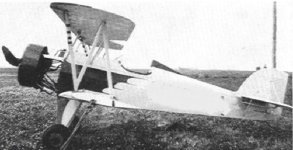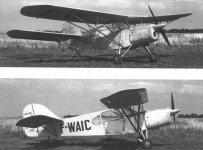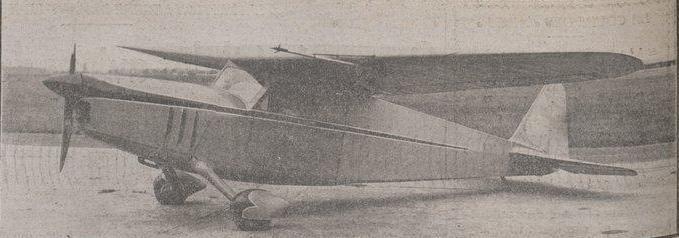-
There seems to be an uptick in Political comments in recent months. Those of us who are long time members of the site know that Political and Religious content has been banned for years. Nothing has changed. Please leave all political and religious comments out of the forums.
If you recently joined the forums you were not presented with this restriction in the terms of service. This was due to a conversion error when we went from vBulletin to Xenforo. We have updated our terms of service to reflect these corrections.
Please note any post refering to a politician will be considered political even if it is intended to be humor. Our experience is these topics have a way of dividing the forums and causing deep resentment among members. It is a poison to the community. We appreciate compliance with the rules.
The Staff of SOH
You should upgrade or use an alternative browser.
The Ongoing Mystery Aircraft Thread Part Deux.
- Thread starter Ferry_vO
- Start date
pomme homme
Members +
It must have been kept in the 'rarities' hangar at Toussus le Noble or Guyancourt (?) as the aeroplane in the background, whose registration mark I had to blank out as well, is the ill fated SFCA Lignel 44 'Cross Country' F-BAIC in which Louis Clément lost his life when the port mainplane detached and he spun in at Gand in Belgium in May 1955.
Over to you, sir.

Sorry, but no idea where SEA comes from. Obviously a homebuilt that was built and flown around France and no details to be found. Should be a law against that!
Next challenge a small bipe which may still exist, as I understand she was donated to a museum.
Attachments
pomme homme
Members +
P.s. please don't ask me what happens when an aircraft moved from 'experimental' to the French ULM register, the marks for which comprise the number of the département in which it is registered (e.g. 79 for Deux Sèvres) plus two or three letters (e.g. 79-AA).

Thank you for the explanation of the F-......system and the nice photo`s of the SFCA-Lignel Model 44.
I think she was one of the aircraft to have carried even 3 registrations as F-WAIC, F-BAIC and F-PAIC (homebuilt category).
The small bipe has a Salmson 9Ra up front. She is not French though, but there is something French about her.
pomme homme
Members +
The original 40hp Salmson 9Ra radial was later replaced by a Continental A/C65.
N7941A was donated to the EAA Museum. but I could not find her in the museum`s collection list, so what happened to her?
Can we agree on Mike (PH) posting the next challenge? Seems a proper way of punishing him for lecturing us on the F-..... system

pomme homme
Members +
Hello boys and girls!Yes, it's elegant and according to my only source had a Y-shaped stick ;-)
No registration AFAIK, i.e. no danger of entering another F-W/B/P issue (which I enjoyed!)
I have her as the Roussel 10 of 1938 but I think it has appeared in this forum ages ago...
Cheers
BG
pomme homme
Members +
Yes indeed Moses and very sorry for the delay but with 41 degrees (centigrade) heat I believe it might be justified!
Anyway youjr turn please...
Cheers
BG (Carlo)
fabulousfour
Members +

fabulousfour
Members +
That wee biplane should be a Dietrich DP.II from Germany.





